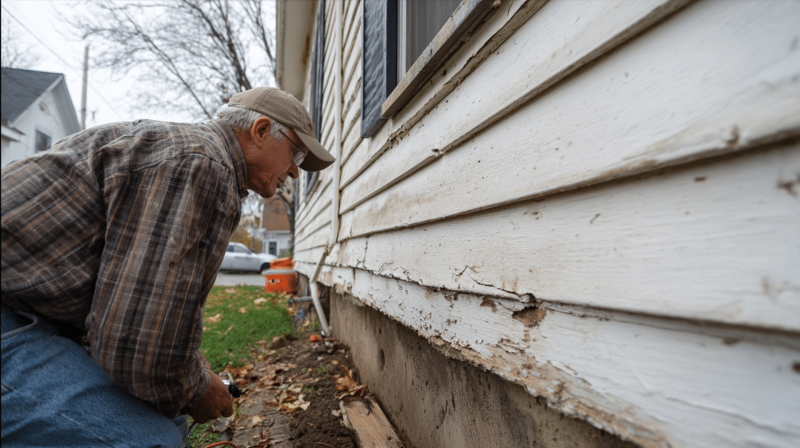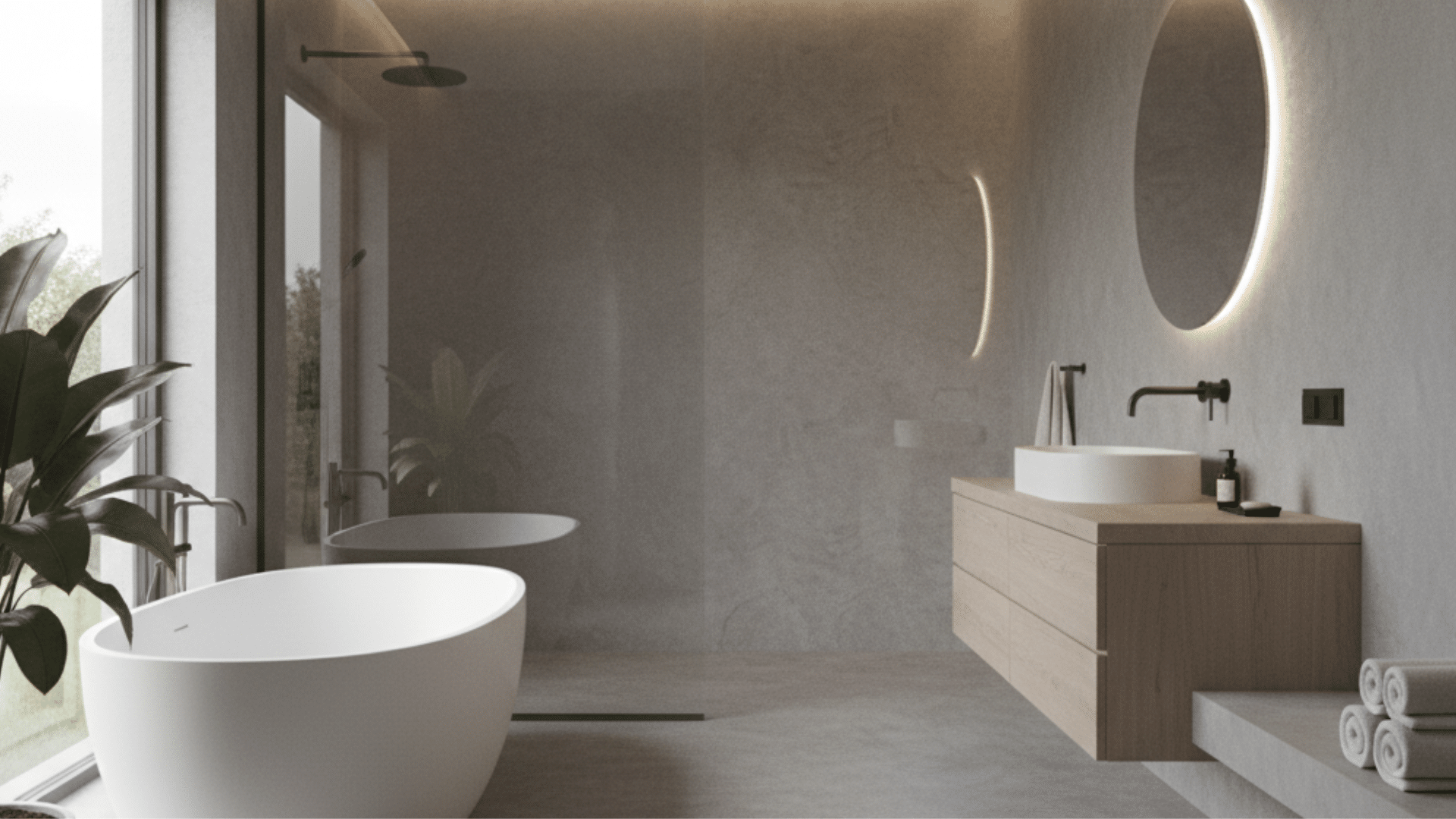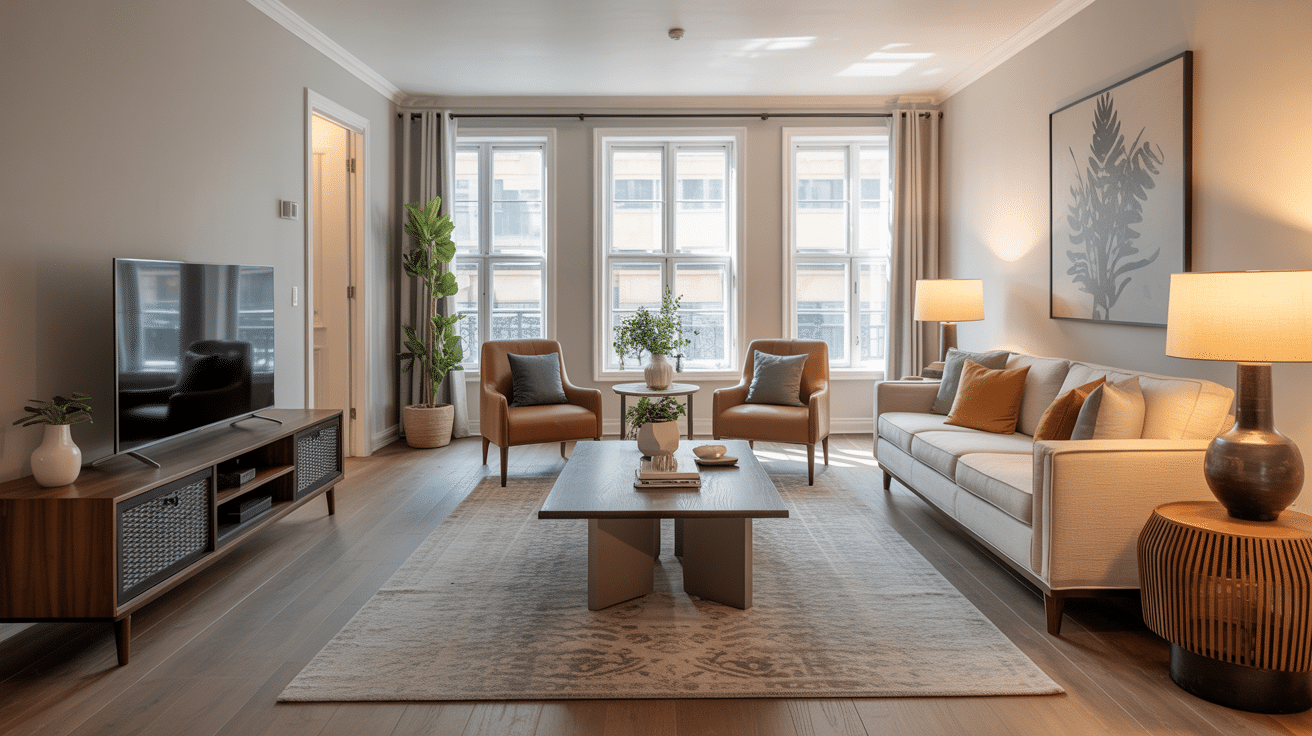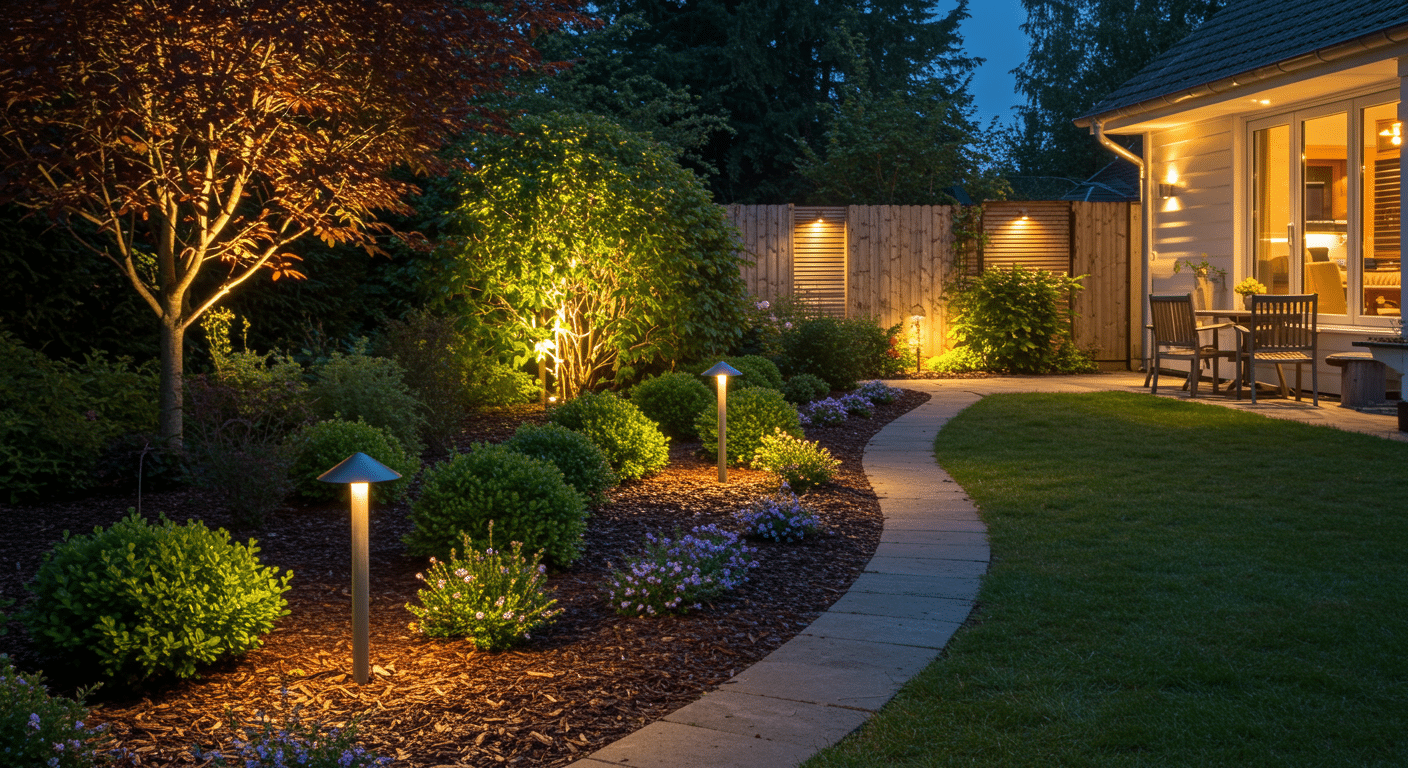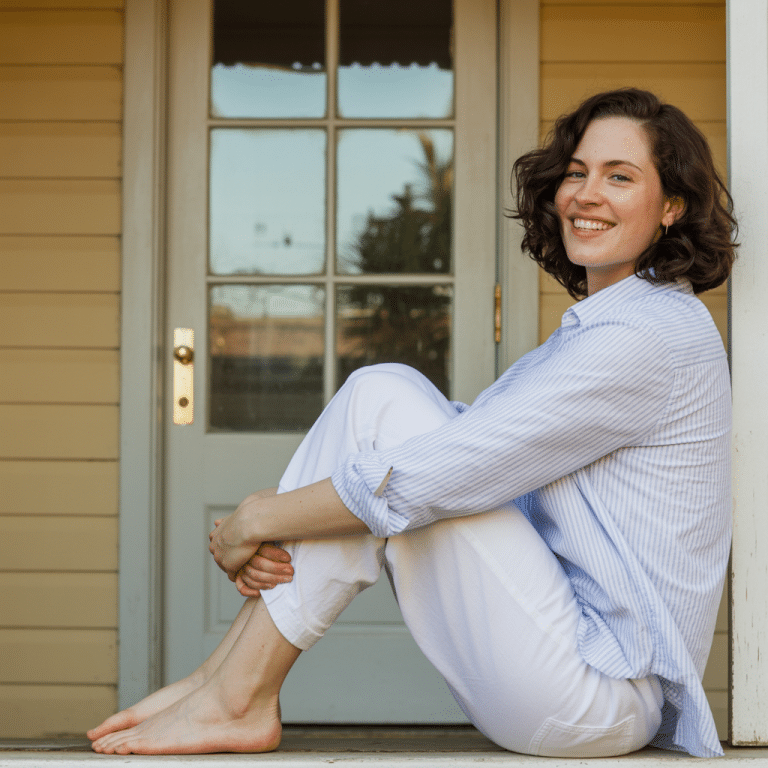You’ve probably seen those houses from the 80s and 90s with siding that looks like it’s been through a blender, warped, swollen, and peeling paint everywhere.
That’s likely Masonite siding doing what it does best: falling apart.
Thousands of homeowners were sold on Masonite as a “premium wood alternative,” unaware they were essentially wrapping their house in compressed cardboard. And when moisture hits this stuff, it doesn’t just get damaged, it turns into a soggy mess that can cost tens of thousands to replace.
So, what is Masonite siding exactly, and why do contractors cringe when they see it? I’m going to break down what this material actually is, why it fails so spectacularly, and what your options are if you’re stuck with it.
What is Masonite Siding and Its Origins
It is also called hardboard masonite siding. It is an engineered wood product made from compressed wood fibers, designed to mimic the look of real wood at a lower cost.
Invented in the 1920s by William H. Mason, Masonite was created by pressing wood fibers with heat and steam. It became widely used for siding after World War II, especially during the suburban housing boom of the 1950s–1980s.
It became popular for being affordable, lightweight, and wood-like in appearance. However, by the 1990s, it faced major issues leading to lawsuits and the end of its production.
Common Types of Masonite Siding:
- Lap Siding (Hardboard Lap Siding): Overlapping horizontal planks that mimic traditional wood clapboard siding; durable and widely used. $3–$6 per square foot (installed)
- Panel Siding (Vertical Panels): Large vertical sheets (4×8 or 4×10 ft) with grooves for a rustic or simple vertical appearance. $2.50–$5 per square foot (installed)
- Shiplap Siding: Horizontal boards with slight overlap and a tight fit for a clean, modern look. $4–$7 per square foot (installed)
- Dutch Lap Masonite Siding: Lap siding variation with a top groove that adds depth and shadow for a more textured style. $3.50–$6.50 per square foot (installed)
Why Masonite Siding Became Infamous?
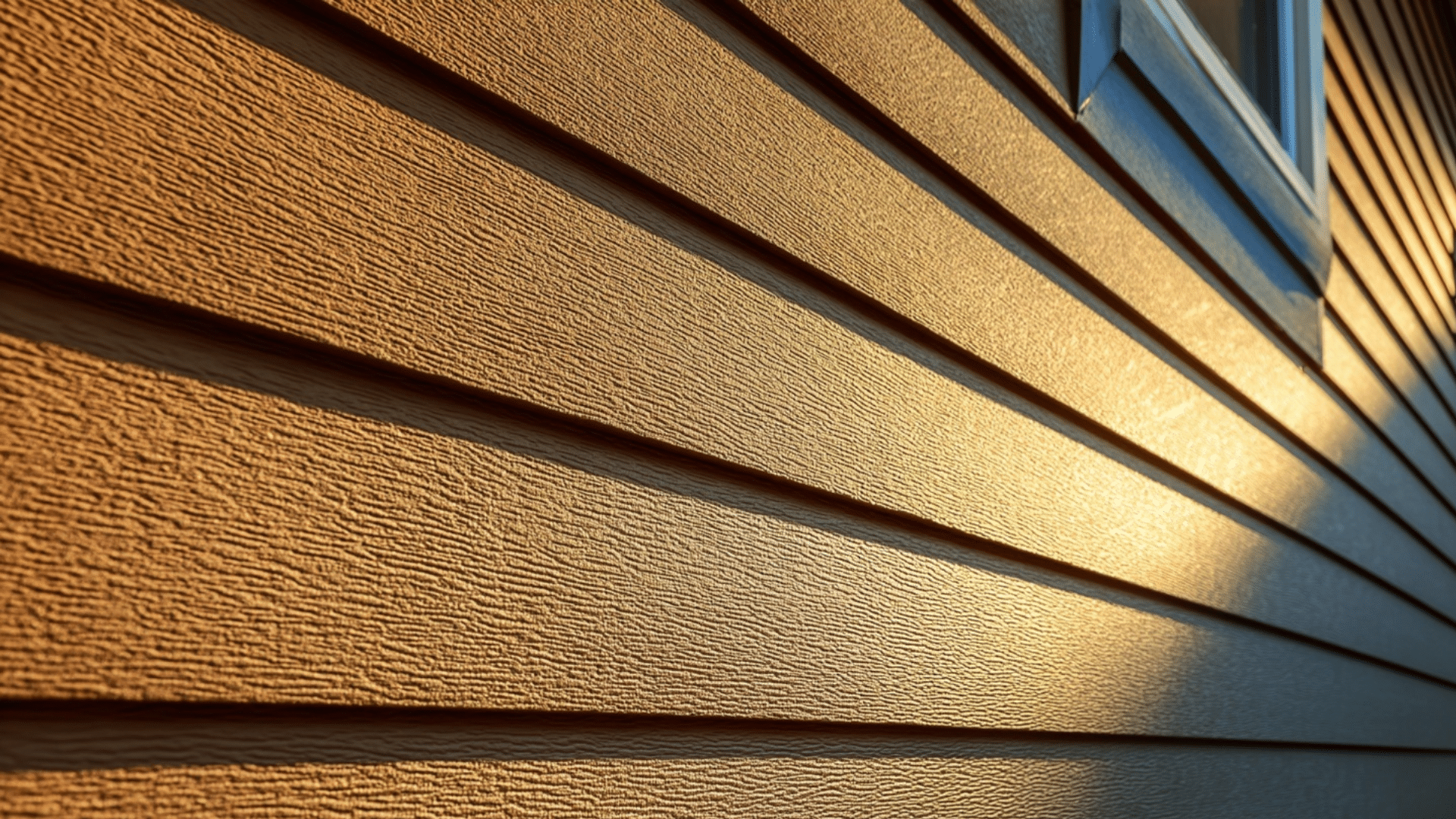
Hardboard masonite siding became infamous due to widespread durability issues that left many homeowners frustrated.
Below are the key reasons why this siding failed and earned a bad reputation over time.
1. Highly Vulnerable to Moisture Damage
My siding absorbs water easily because it’s made from compressed wood fibers. Over time, moisture causes it to swell, warp, and rot, especially along edges and seams.
Even with paint and sealant, I find it tough to completely protect it from rain and humidity.
2. High Maintenance Requirements
To keep my siding from falling apart, I constantly need to repaint, recaulk, and seal it. If I skip even one maintenance job, the damage shows quickly.
It’s exhausting and expensive to stay ahead of rot, cracks, and water damage, making it a siding option that demands constant care.
3. Premature Siding Failures
Despite my best efforts, my siding started showing cracks, bulges, and peeling paint within a few years. The boards didn’t last as promised, and small problems quickly turned into costly repairs.
4. Massive Lawsuits and Legal Fallout
Like many homeowners, I was caught in the middle of siding defects. Class-action lawsuits exploded in the 1990s as thousands of people, including myself, faced premature siding failures.
While settlements were paid, the damage was already done both to my home and Masonite’s reputation.
5. Discontinuation of Production
By the late ’90s, Masonite stopped making its siding. That left me with no warranty, no support, and no matching replacement panels. Now, if my siding gets damaged, I’m stuck trying to patch it or consider a full replacement with a completely different material.
How to Identify Masonite Siding in Your Home
It often looks like natural wood but is made from compressed wood fibers and resin. Below are key signs to help you recognize it:
- Look for wood-grain or smooth pressed panels: These mimic the appearance of real wood but often look flatter and more uniform.
- Check the backside for manufacturer stamps or product codes: Look for markings like “Masonite,” “X-90,” or similar identifiers.
- Inspect for common damage signs: Swelling, bulging edges, cracking, blistering paint, soft spots, and rot are typical.
- Consider the age of your home: Homes built or renovated between the 1960s and 1990s commonly used it.
- Observe joint and trim styles: Look for straight lap seams filled with caulk and fiberboard trim pieces around windows/doors.
Tips for Maintenance & Repair of Masonite
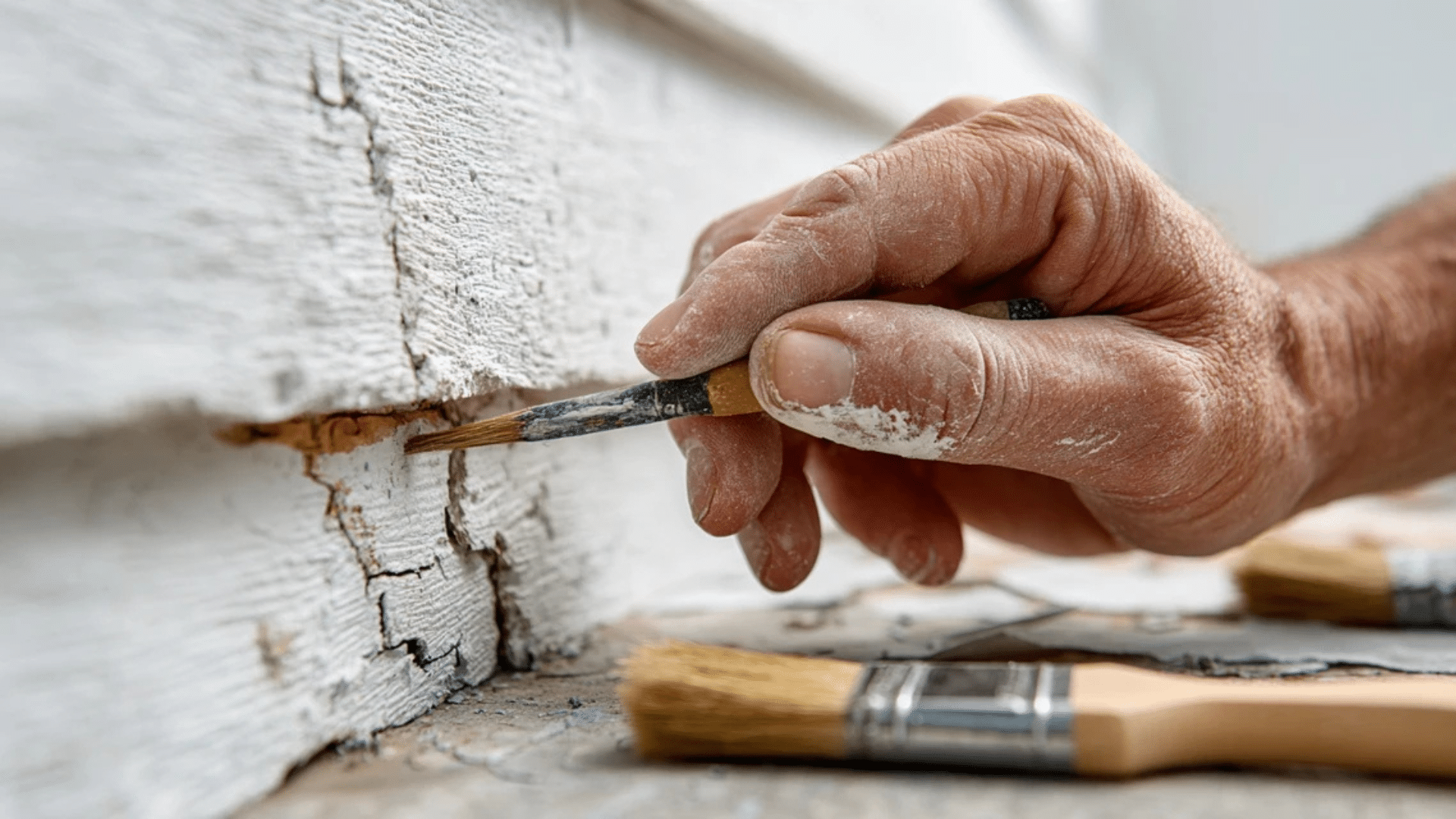
To keep siding in good shape and avoid costly damage, regular care is essential. Below are some practical tips I follow to maintain and repair my siding effectively:
1. I walk around my house and check the siding for cracks, bulges, or peeling paint before problems get worse.
2. I use a garden hose and soft brush to wash away dirt without damaging the siding surface.
3. When I notice cracked caulking, I remove it and apply fresh sealant to keep water out.
4. I repaint the siding every few years to protect it from moisture and sun damage.
5. If I see a crack or dent, I fill it and repaint quickly so it doesn’t get worse.
6. I inspect for termites and bugs often because catching them early saves me from major repairs.
Options to Consider While Choosing a Replacement
If you’re planning to replace siding, it’s important to choose a material that’s durable and low-maintenance.
Below are some of the best alternatives that offer long-term reliability and better protection for your home.
| Option | Key Pros | Key Cons | Approximate Cost (Installed) |
|---|---|---|---|
| Fiber Cement Siding | Durable, fire & moisture-resistant, wood-like | Heavy, expensive, and needs a professional installation | $10 – $14 per sq. ft. |
| Engineered Wood Siding | Affordable, stable, natural wood appearance | Needs regular sealing and painting | $7 – $11 per sq. ft. |
| Vinyl Siding | Low-cost, very low maintenance, many styles | Less realistic wood look | $4 – $8 per sq. ft. |
| Composite Siding | Durable, eco-friendly, pest-resistant | High upfront cost, fewer style options | $10 – $15 per sq. ft. |
Total Cost Breakdown of Replacing Masonite Siding
Replacing masonite siding involves several cost factors that I’ll break down to help you budget properly.
The total expense depends on your home’s size, chosen materials, and whether you hire professionals or do it yourself.
Material Costs: The replacement materials costs have already been detailed earlier in this blog post.
Labor Costs:
- Professional installation – $2 to $6 per square foot for experienced contractors
- Removal of old siding – $1 to $3 per square foot, including disposal fees
- Additional prep work – $500 to $2,000 for repairs or house wrap installation
Additional Expenses:
- Permits – $100 to $500, depending on your local requirements
- Trim and accessories – $200 to $1,000 for corners, J-channels, and flashing
- Insulation upgrades – $1 to $3 per square foot if needed during replacement
Total Project Range: For a typical 1,500 square foot home, expect total costs between $12,000 and $35,000, with most homeowners spending around $20,000 for quality materials and professional installation.
Money-Saving Tips
- Get multiple quotes from different contractors
- Schedule work during off-peak seasons for better rates
- Handle prep work yourself if you have the skills
Bottom Line
This siding seemed like a perfect solution once, but over time, its flaws became impossible to ignore. Now that I know what is Masonite siding, I understand why it became infamous for moisture damage, high maintenance, and early failures.
Learning its history helps me see the bigger picture of why production stopped and why so many homeowners, like me, faced challenges with it.
By identifying its weaknesses and following the right care steps, I can either maintain it properly or plan for a smarter replacement.
If you’re dealing with it, too, I hope this deep dive has cleared up your questions. Let me know if you found this blog helpful or if you’ve faced siding issues yourself!


